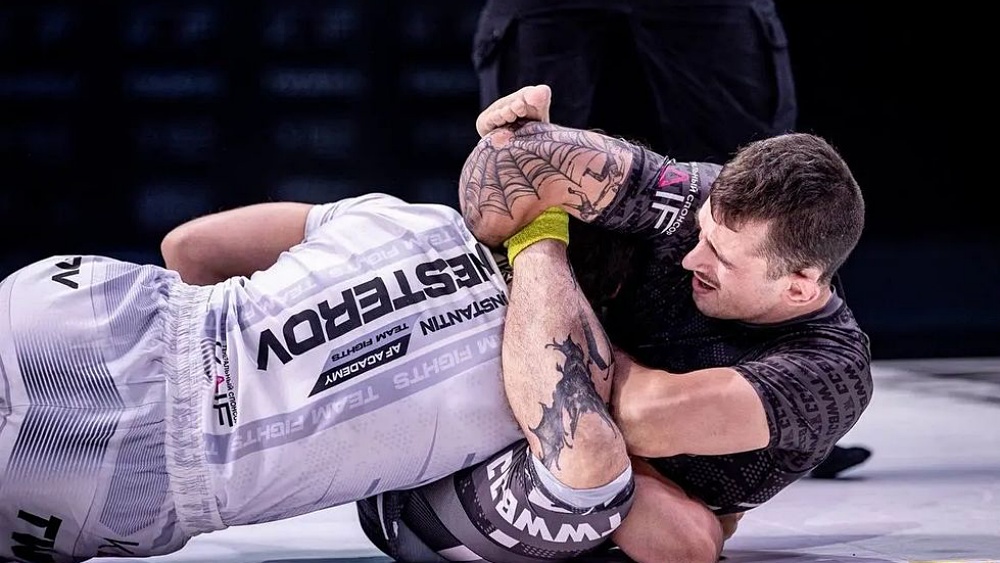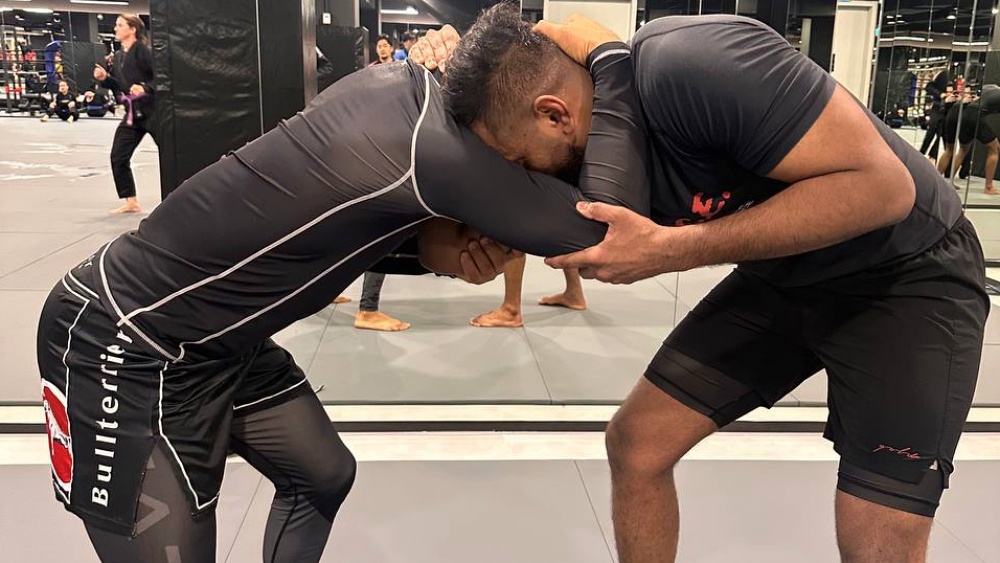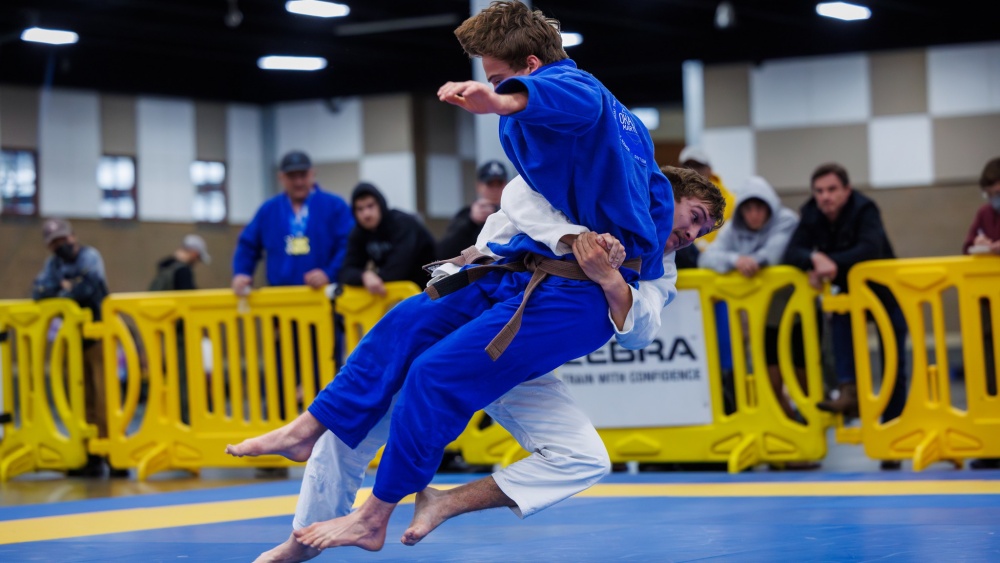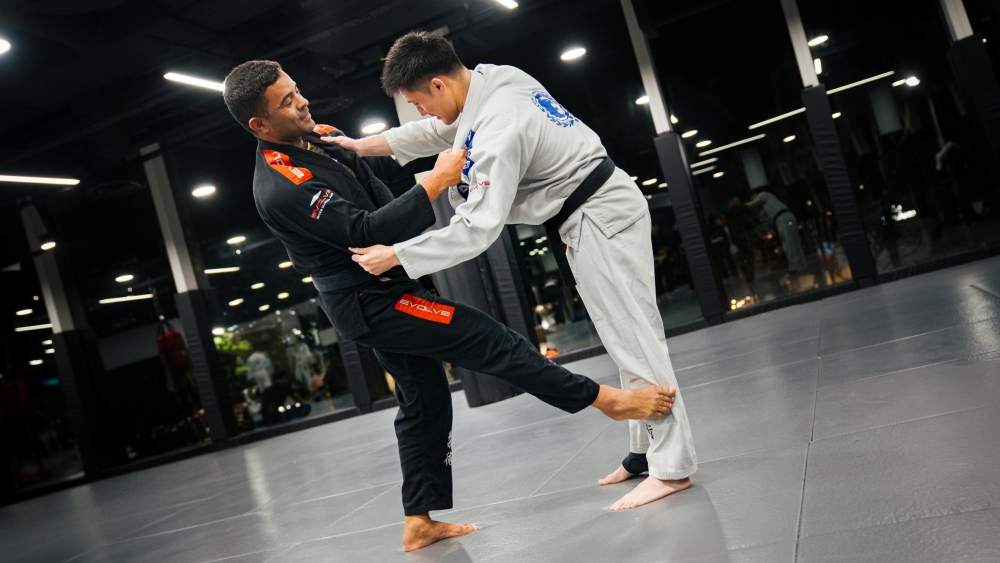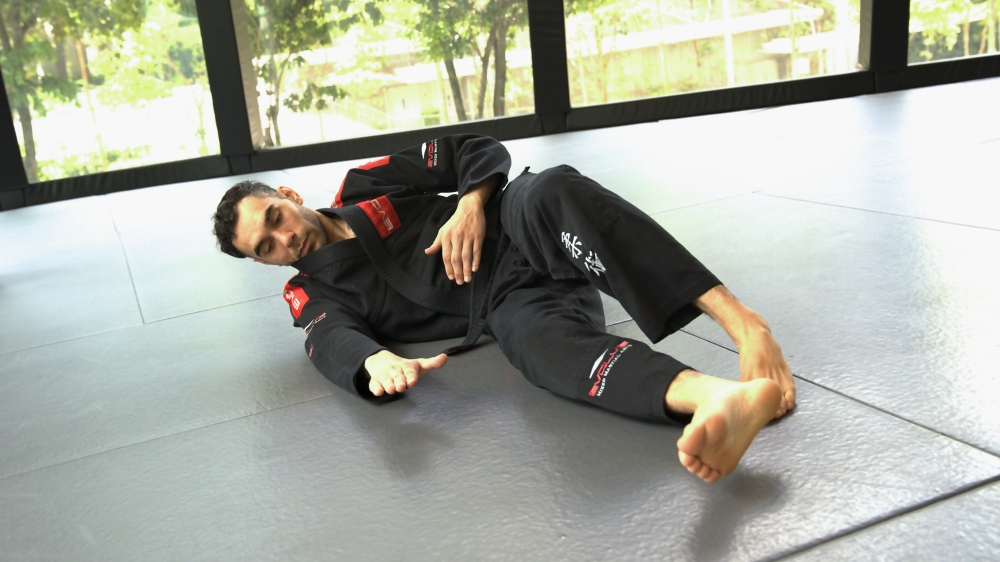Brazilian Jiu-Jitsu is a martial art that has been rapidly growing over the years. It is one of the few major martial arts in the world where techniques are still improving and will surely continue to evolve in the years to come. One of these new developments in BJJ is the Hindulotine, a variant of the guillotine choke. What sets the Hindulotine apart is its specific grip and body positioning, which allow for a more secure and tighter choke, often catching opponents off guard. In this article, we’ll explore what the Hindulotine is, how it’s performed, and why it can be a great addition to your BJJ.
What Is The Hindulotine In BJJ?
The Hindulotine is not as widely recognized as other submissions, but it has gained attention among grapplers who appreciate its effectiveness. The move “Hindulotine” is a play on words, where you apply a submission similar to the traditional guillotine choke, but you use your legs as well as arms to complete the choke. Regarding the person synonymous with the Hindulotine, it is safe to say that most people think of Ben Eddy of the 10th Planet Jiu-Jitsu. Ben is a world-class black belt known for his unique grappling style.
Mechanics Of The Hindulotine
The Hindulotine is a front headlock choke, similar in appearance to the traditional guillotine, but with a few key differences. The technique is typically applied when your opponent is in a bent-over position, often as a means to not only control posture but also finish the match instantly. The Hindulotine is a more inescapable choke as compared to the standard guillotine.
To execute the Hindulotine, you begin by establishing a strong front headlock, similar to the setup for a guillotine choke. However, instead of locking your hands in a traditional guillotine grip (palm-to-palm or palm-to-wrist), you use a modified grip that allows for greater control and pressure on your opponent’s neck.
In this video, Ben Eddy explains his approach to the Hindulotine. He starts by going for the overhook clamp position from the butterfly guard. He then goes for the “meat hook” position, where he grabs near the opponent’s chest area to control their posture. From here, he then goes for the regular guillotine grip to control the head and uses the other arm to support the hold. Once locked in, the Hindulotine is very tough to get out of. The triangle choke is a good follow-up in case the opponent pops their head out.
Advantages Of The Hindulotine
The Hindulotine offers several advantages over the traditional guillotine choke, making it a valuable addition to any grappler’s arsenal. Here are some of the key benefits:
The modified grip used in the Hindulotine provides greater control over your opponent’s head and neck. This control makes it much harder for your opponent to escape or counter the choke, especially when combined with the proper body positioning. One of the most common defenses to the guillotine, or any guard choke for that matter, is raising the head. By using the Hindulotine setup, it will be doubtful that the opponent postures up as their head is fully controlled.
The Hindulotine allows you to apply more pressure to your opponent’s neck, making the choke more effective and quicker to finish. The unique grip and body alignment ensure that your opponent feels the full force of the choke, leading to a faster tap.
It can be applied from a variety of guards and is a great addition to one’s front headlock game. As mentioned above, if you play the triangle choke, the Hindulotine can be a great transition to it. Because the Hindulotine is not as widely known or practiced as the traditional guillotine, it can catch opponents off guard. Even experienced grapplers may be unfamiliar with the subtle differences in the technique, making it a valuable weapon in competition.
Lastly, the Hindulotine can be adapted to suit your opponent’s reactions. For example, if your opponent tries to posture up or roll out of the choke, you can adjust your grip or transition to another submission.
Common Mistakes And Troubleshooting
Like any technique, the Hindulotine requires precision and practice to execute correctly. A common mistake is using an incorrect grip, which is critical to the effectiveness of the Hindulotine. Unlike the traditional guillotine, the Hindulotine requires a unique hand positioning, with one hand placed securely behind your opponent’s head and the other supporting your own wrist. Ensuring your grip is correct is essential to executing the choke properly.
Body positioning is another area where mistakes frequently occur. If you fail to enter the clamp-to-meat hook transition, getting to the Hindulotine becomes difficult. Going to the proper setups is crucial to maximize the effectiveness of the Hindulotine.
Patience and control are key to executing the Hindulotine successfully. Rushing the choke is a common error that can result in a sloppy execution, allowing your opponent to escape. Instead, take your time to secure both the grip and your body position before applying pressure. This measured approach ensures that the choke is applied with the precision needed to finish your opponent.
Finally, adaptability is important when applying the Hindulotine. If your opponent begins to counter or attempt an escape, be ready to adjust your technique. This might involve switching to a different grip, repositioning your body, or even transitioning to another submission. Being prepared to make these adjustments can be the difference between finishing the choke or losing control of the position.
Conclusion
The Hindulotine is a powerful and effective variation of the guillotine choke that can be a valuable addition to your BJJ game. Its unique and unorthodox nature is sure to catch many unsuspecting opponents by surprise. Mastering the Hindulotine can massively enhance your bottom game, making you a more dangerous grappler. We encourage you to at least review the video above if you are interested in this submission. As with all techniques in BJJ, consistent and deliberate practice is the key to rapid improvement.
You may also like:
